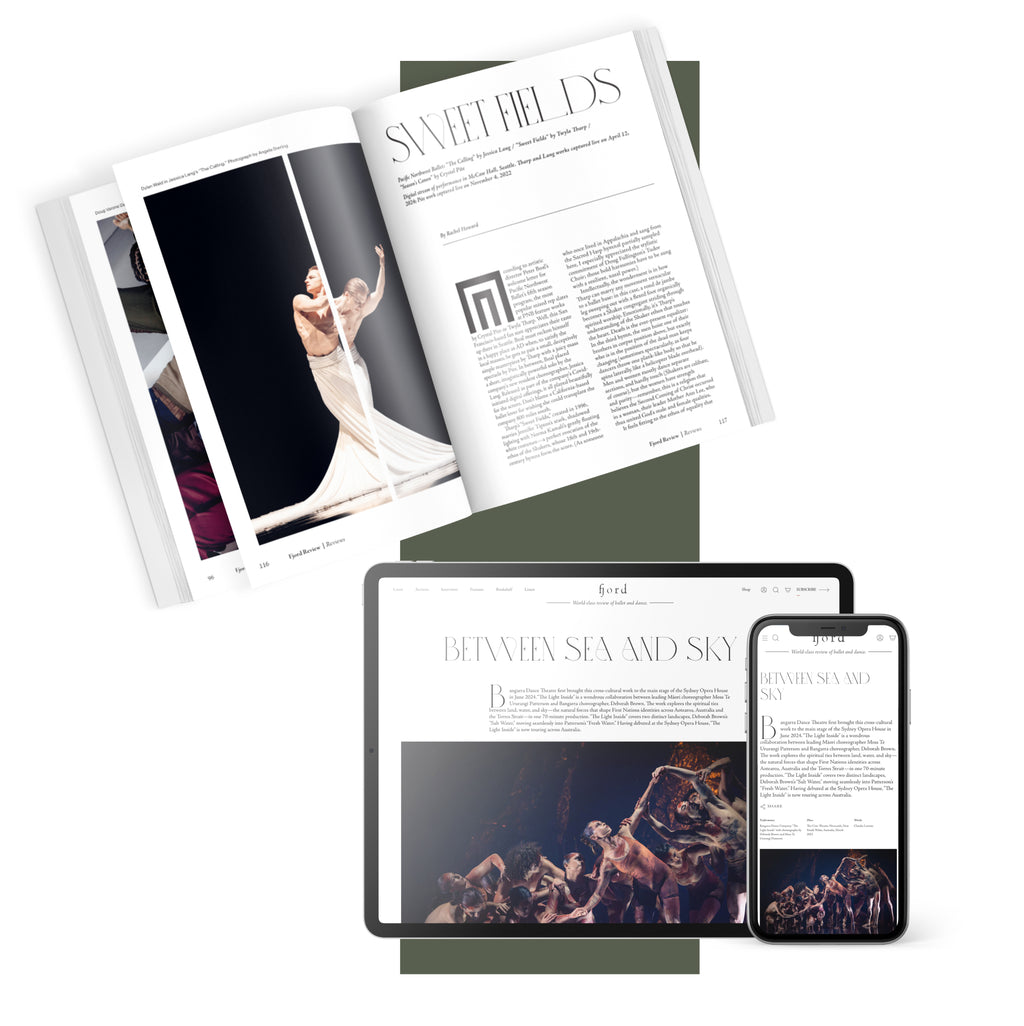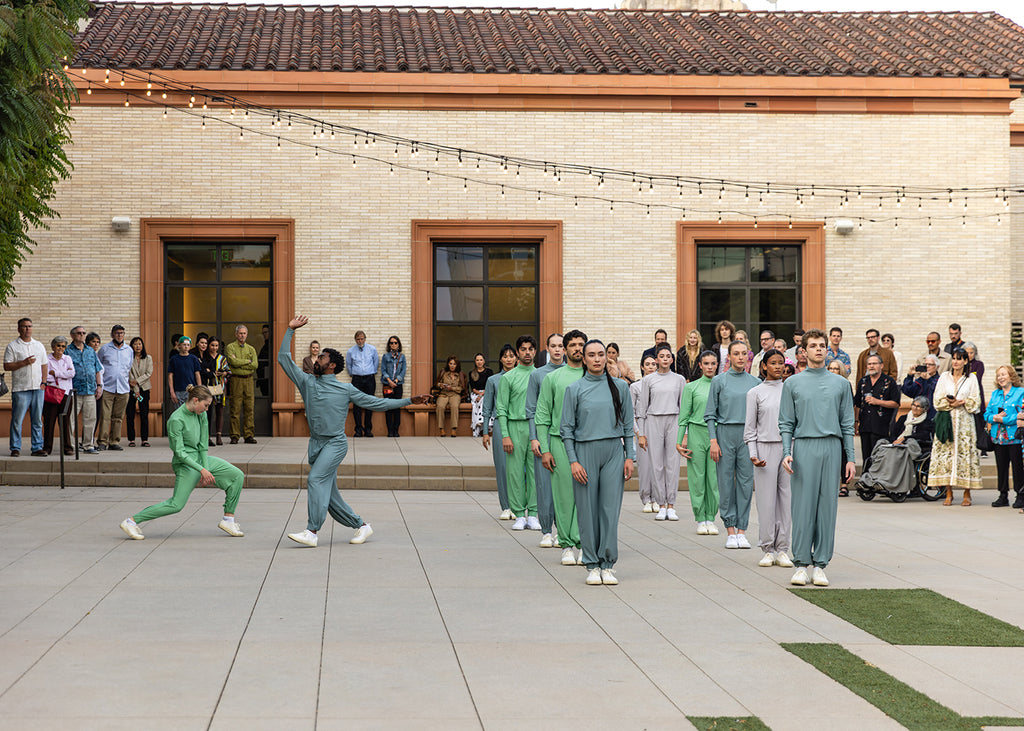The first of four dances under the heading, “Gatherings,” the work, a US premiere (it was first performed at the National Museum of Qatar in 2022), featured a recorded score by Nico Muhly. Beginning outside the building that was built in 1934 as a post office, the ensemble moved like a shapeshifting amoeba. Clad in Reid & Harriet’s pastel-colored, neo-track suits, the performers ran, spun, and fell into formations that, at times, resembled prisoners in an exercise yard, albeit one with no bars, guards or athletic equipment, but a refuge, instead, where trees, the sweet smell of jasmine and the cool breeze of a June evening in Los Angeles proved the perfect milieu for these movers.
Indeed, backbends ruled and pairs were formed, with LADP members Jeremy Coachman and Courtney Conovan performing an ebullient pas de deux, before the group relocated to the gorgeous marbled lobby. Once inside, the dancers, deploying mini-hip twists and assuming yoga-like poses, created tableaux that resembled sculptures come to life, their faces studies in concentration. With Muhly’s score growing louder and more insistent, the group not only proved there was safety in numbers, but, considering the student performers, generated hope for the future.
Also new to this writer: Bobbi Jene Smith’s and Or Schraiber’s “Quartet for Five,” which bowed in Paris in 2022 and is set to Philip Glass’ String Quartet No. 5 (1991). Immediately recognizable as Glass—swelling, ever-changing rhythms and falling arpeggios, but also unpredictable in its contrasts—the work, a perfect marriage of music and movement, is luscious, deep and dark (evocative lighting design by Clifton Taylor), as it explores the diverse relationships that exist between a quintet of dancers: Daphne Fernberger, Marcel Mejia, Nicholas Sakai, Conovan and Coachman.
And what relationships they were! A kind of nod (in this reviewer’s mind) to Arthur Schnitzler’s notorious 1897 play, “La Ronde,” this was coupling, uncoupling and fluctuating group dynamics confined only to the length of the 22-minute score and the size of the stage, with the overarching mood elegiac, and a table and several chairs also on view.











comments